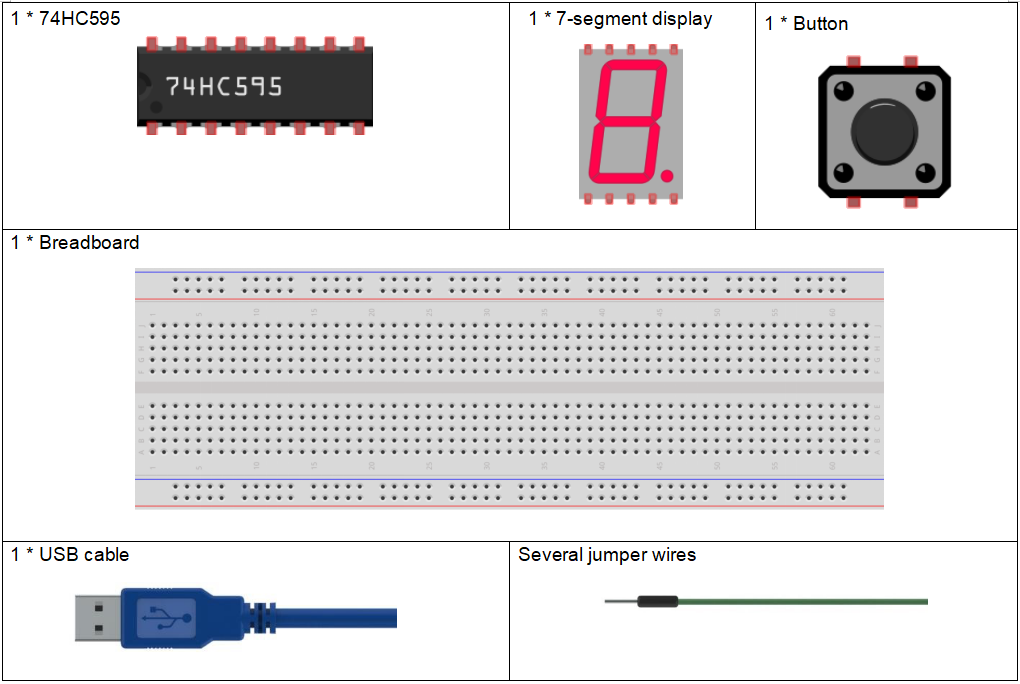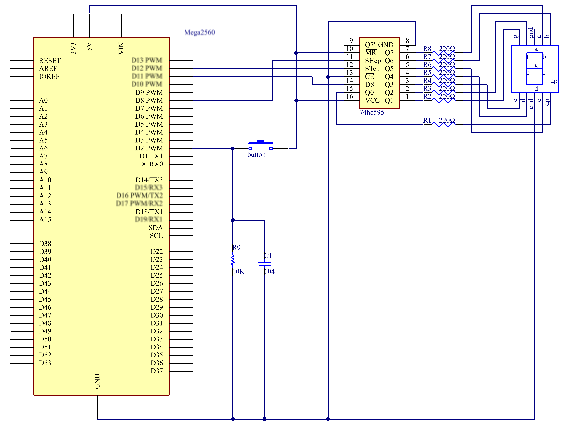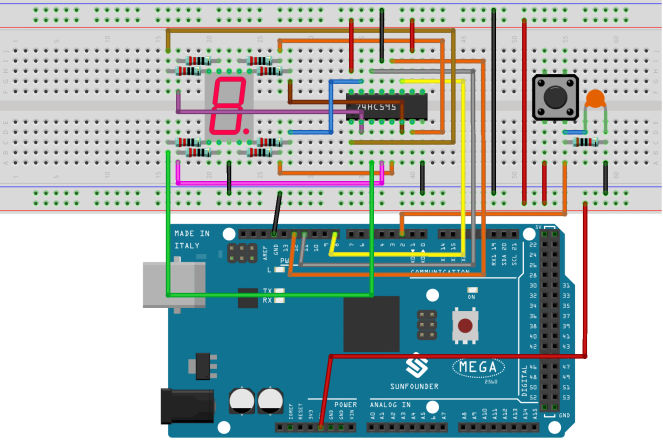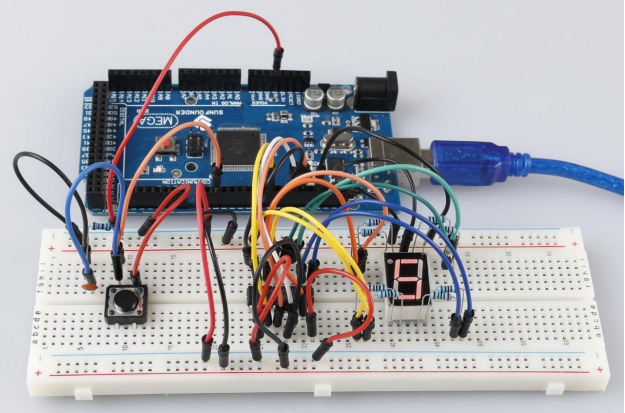Introduction
In previous experiments, we learned how to use a 7-segment display and control LEDs by a button. In this lesson, we will use a 7-segment display and a button together to create a simple digital dice.
Components


Experimental Principle
The idea behind a digital dice is very simple: a 7-segment display circularly jumps from 1 to 7 rapidly. When the button is pressed, the jumping will slow down until it stops on a number. When the button is pressed again, the process will repeat.
The schematic diagram:

Experimental Procedures
Step 1: Build the circuit

Step 2: Open the code file.
Step 3: Select the Board and Port.
Step 4: Upload the sketch to the board.
You can now see the 7-segment display jump between numbers from 1 to 6. Press the button, and the jumping will slow down until it stops three seconds later. Press the button again, and the process will repeat.

Code Analysis
Code Analysis 25-1 The initial random number comes from A0
randomSeed(analogRead(0));The initial random number is generated from A0 and the range for the random numbers is 0-1023.
Code Analysis 25-2 Digital Dice
void loop()
{
int stat= digitalRead(keyIn); //store value read from keyIn
if(stat == HIGH) // check if the pushbutton is pressed
,If yes, the corresponding pin is high level
{
num ++; //num adds 1
if(num > 1) //If num > 1, clear the value. This is to prevent repeated pressing. So just count it as once no matter how many times you press.
{
num = 0;
}
}
Serial.println(num); // print the num on serial monitor
if(num == 1) //when pushbutton is pressed
{
randNumber = random(1,7); //Generate a random number in 1-7
showNum(randNumber); //show the randNumber on 7-segment
delay(1000); //wait for 1 second
while(!digitalRead(keyIn)); //When not press button,program stop here Make it keep displaying the last random number.
int stat= digitalRead(keyIn); // Read the state of the button again.
if(stat == HIGH) // check if the pushbutton is pressed.If yes, run the code below
{
num ++;
pinMode(ledPin, OUTPUT); //initialize the digital pin as an output
digitalWrite(ledPin, HIGH); //turn on the led
delay(100);
digitalWrite(ledPin,LOW); //turn off the led
delay(100);
if(num >= 1) // clear the num
{
num = 0;
}
}
}
//show random numbers at 100 microseconds intervals
//If the button has not been pressed
randNumber = random(1,7);
showNum(randNumber);
delay(100);
}
Code Analysis 25-3 showNum() function
void showNum(int num)
{
digitalWrite(latchPin, LOW); //ground latchPin and hold low for transmitting
shiftOut(dataPin,clockPin,MSBFIRST, datArray[num]);
//return the latch pin high to signal chip that it
//no longer needs to listen for information
digitalWrite(latchPin,HIH); //pull the latchPin to save the data
}
